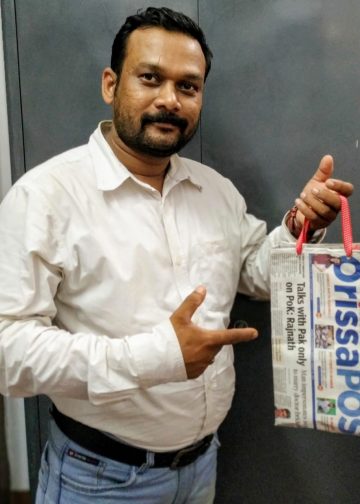Biswa Bhusan Mohapatra
Post News Network
Bhubaneswar, Sept 28: Orissa, which used to be power surplus state for several years, is facing huge power crisis in September. The government has neither succeeded in drawing an alternative plan to overcome the crisis nor in bringing down the high transmission and distribution losses.
The state faces a shortage of 600 to 700 mega watt (MW) every day. While its demand is 5200 MW a day, the state generates 4500 MW power. Consequently, it is forced to cut down power in peak hours.
Government sources say due to deficit rainfall, the state has been facing power crisis. However, the reality is far from the government’s claim. The state government has all the wherewithal to overcome the situation, but it has not utilised all its resources properly and in time.
Orissa is the first state to pioneer power sector reforms. It has attracted a few power companies, power sector investors and set up its own power producing units. The state faces shortage as some projects have not yet commenced operation and some have not generated out of their maximum installed capacity.
According to energy department sources, the state had signed MoUs with 29 independent power producers (IPPs) between 2006 and 2011 to set up thermal power units having a capacity of 37,440MW, of which the state’s share would be 6,141 MW. Ironically, four of the IPPs have started functioning while 20 others are yet to commence construction works, sources said.
With regard to hydro projects, the government has failed to put pressure on companies with which it has inked MoUs to start operations. The state had signed MoUs with 26 companies to set up 32 small hydroelectric projects in state. However, two companies — Orissa Power Consortium Ltd. and Meenakshi Power Ltd, had started operation in three places.
Besides, the state has the power to draw electricity forcefully from the captive power plants (CPP). But, the state has failed to utilise power from such plants.
The total transmission and distribution loss of power in the state is 38 per cent. “If it can reduce the losses to 10 per cent or below, the government may not face the crisis,” an official said on condition of anonymity.
The state has the option to buy power from other states. The cost of power, in such cases, would become more than the existing price. The state can recover the amount by selling power when it generates more, the official said.
According to Orissa Power Transmission Corporation limited (OPTCL) director (commercial) PK Pradhan, power generation from seven hydro projects has fallen by 50 per cent due to deficit rainfall. The plants can generate around 2,084 MW a day, out of which the state was able to generate 1400 to 1500 MW power in August. However, this year the state generated around 850 MW, he said.
Similarly, four units of thermal plants have been closed due to annual overhauling. “The thermal plants normally close down for annual maintenance this season. Otherwise, the plants may face problems in summer,” Pradhan said, adding, “During monsoon, the demand is usually less and hydro-power plants generate the needed power to meet the demand when thermal powers produce less.” This year, the deficit rainfall has created the problem, he added.
The IPPs and captive power plants inject about 650 mw to the state grid while it gets 370 mw from Ib thermal power station, 310 mw from Talcher thermal power station and 900 mw from the Centre, said Pradhan.
Replying to queries energy minister Pranab Prakash Das said, “The government is taking all measures to resolve the crisis at the earliest. The situation will improve after October 10.”
The state government would execute a long-term action plan to overcome power crisis situations like this year’s, he said.
Asked why the government has not been drawing power from the CPP or the power plants of big industries, the minister said, “We cannot depend on them. Because, the CPPs could not provide a particular quantity of power every day for long and we cannot cut the power without informing the people.”







































